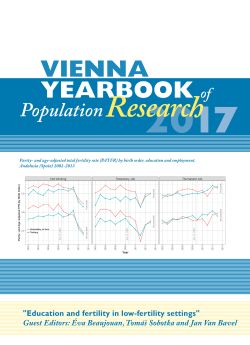
Vienna Yearbook of Population Research 2017, pp. 269-291, 2018/06/18
Special issue on Education and fertility in low-fertility settings

High fertility among immigrant groups is often analysed as an expression of specific cultural factors and/or lower social status. I hypothesise that differences in educational attainment explain the fertility differentials across immigrant groups and generations in the UK. Building on previous work, and using household survey data and the Own-Child reverse-survival method, the paper presents for the first time total fertility and age-specific fertility estimates by broad categories of educational attainment for immigrant and second-generation British Pakistani, Bangladeshi, Indian, and Chinese women. I use these estimates to analyse how education influences childbearing across British Asian ethnic groups, and compare the fertility patterns of these groups to those of the whole UK population. High levels of educational attainment contribute substantially to the low overall fertility levels of Indian and Chinese women. Higher education also contributes to the lower fertility levels of the second-generation British Pakistani and Bangladeshi women relative to those of the immigrant generation. Some differences between groups remain after decomposing by educational level, which suggests that there are additional influencing factors. The results are discussed in the context of social theories on the incorporation of immigrants and minorities.